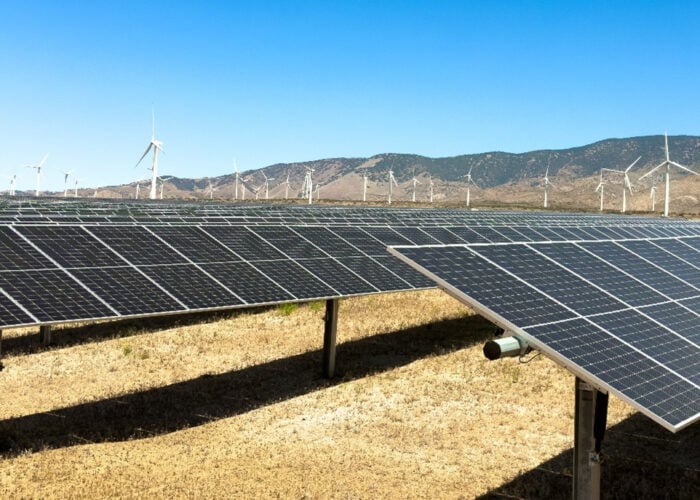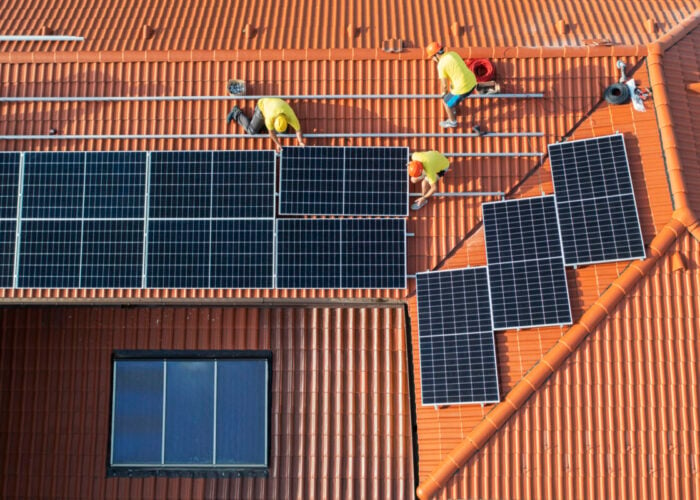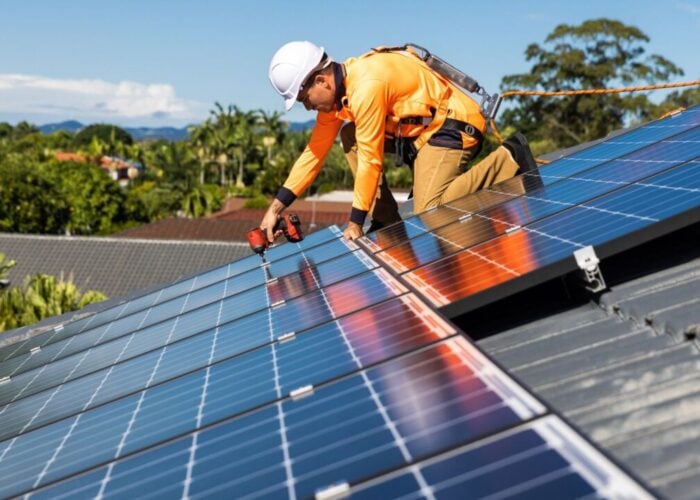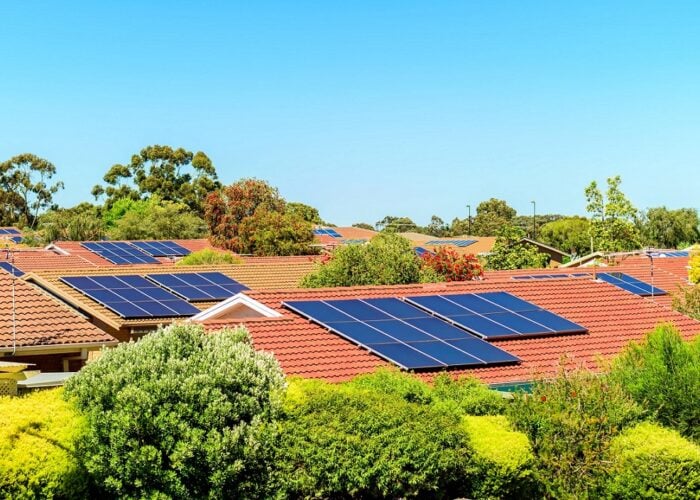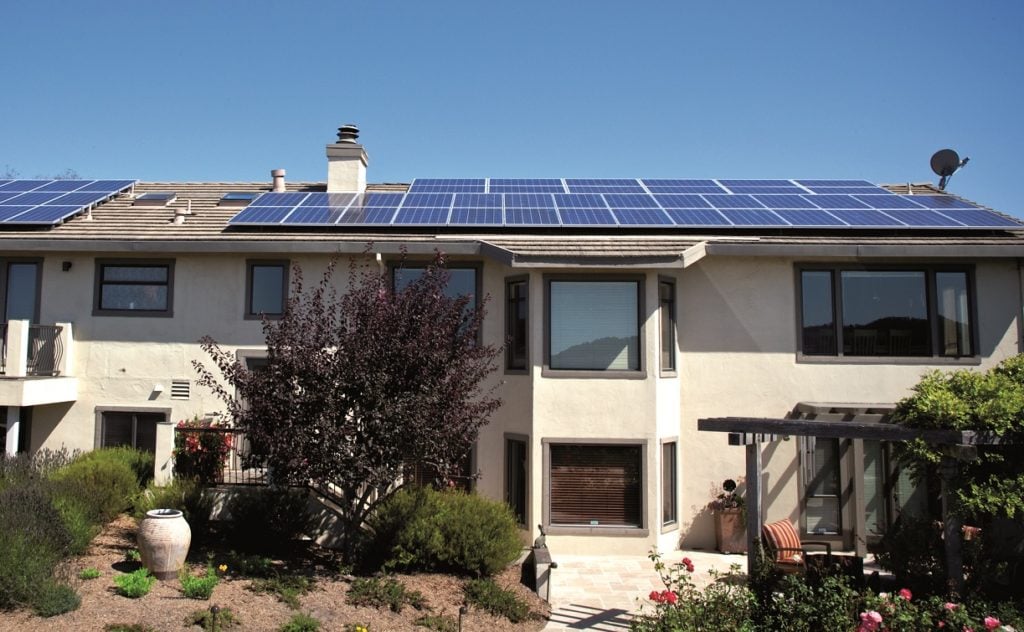
Most large cities in the US are facing a tri-fold crisis of housing, energy, and affordability including cities in New York State, California, Colorado, and others. Many residents in these cities face a lack of available housing combined with income inequality, which is exacerbated by the rising cost of basic expenses, particularly detrimental for renters. Plus, it’s no secret that Americans across the nation bear the brunt of an aging energy infrastructure, experiencing more frequent power outages and high energy bills due to rising and volatile energy prices.
The good news is that there’s a single existing programme that can help tackle all three of these issues: Virtual Net Energy Metering (VNEM).
Unlock unlimited access for 12 whole months of distinctive global analysis
Photovoltaics International is now included.
- Regular insight and analysis of the industry’s biggest developments
- In-depth interviews with the industry’s leading figures
- Unlimited digital access to the PV Tech Power journal catalogue
- Unlimited digital access to the Photovoltaics International journal catalogue
- Access to more than 1,000 technical papers
- Discounts on Solar Media’s portfolio of events, in-person and virtual
VNEM is a billing system that allows multi-family properties like apartment complexes to share the clean energy and cost-saving benefits of solar with multiple units within the property. Put simply, it incentivises builders to adopt rooftop solar and share the benefits – both financial and environmental – back to renters.
Before this programme, multi-family solar adoption was low because there was no easy way of ensuring equitable distribution of generation across multiple loads without incurring significant and redundant costs to physically interconnect to each unit. This meant buildings with multiple electric meters would require an individual solar system for each tenant, not to mention cost prohibitive by building individual solar systems for each meter in each unit of an apartment building.
VNEM effectively simplifies the solar process for multi-tenant buildings, allowing building owners to install a single solar system onsite to cover the electricity load of both the common areas and residential units. This helped spur the adoption of solar by doing three things.
First, it removes redundant equipment like solar monitoring hardware, wiring runs, breakers and disconnect switches for every point of interconnection, making solar on multi-family buildings more affordable.
Second, it incentivises builders to use the savings to pay back the system, recovering the upfront costs for investing in solar.
Third, and most importantly, it allows landlords to share the value of solar back to tenants.
By extending the benefits of solar equally among all tenants, VNEM offers a roadmap for an equitable and inclusive clean energy transition by reaching marginalised communities who have historically been excluded. According to the National Association of Realtors, we are currently experiencing the largest Black-White homeownership rate gap in a decade where Black and Hispanic homeowners and renters are more cost-burdened than other racial groups. This means they are less likely to have access to solar and the corresponding bill savings. VNEM effectively course-corrects to provide a wide range of households – including affordable housing properties – the benefit of rooftop solar by making it viable for landlords and developers to share the benefits across the board.
Ultimately, it is renters who share a roof that most greatly benefit from the advent of VNEM. VNEM enables builders to share savings back to renters, helping tenants living in multi-family properties to save on their average net electricity bills which can be particularly beneficial for families that live in affordable housing communities.
It’s one of the reasons the developer of Poppy Grove Apartment homes, a 387-unit affordable housing complex in Elk Grove, decided to adopt solar. The 16-acre property in Northern California developed by UrbanCore Development and E. Smith and Company is expected to save about US$2.7 million over fifteen years. Using VNEM, those savings will be shared with residents, helping them save nearly $1,000 annually on their electricity bill.
“When states prioritise delivering cost-savings to its residents, they can change the trajectory and lives of the people that live there. Programmes like VNEM put equity at the forefront,” said Reese A Jarrett, president of E. Smith and Company.
The grid also benefits from programmes like VNEM. More rooftop solar means less dependence on the utility to provide all of the home’s energy and, in some cases, can even share any excess energy back to the grid. There aren’t many energy solutions that have this level of impact, and the few options out there are either unready for large-scale adoption, require miles of infrastructure for transmission and distribution, or offer fewer benefits to the grid at large than rooftop solar.
VNEM is where a lot of important public policy comes together – housing, affordability, equity, clean energy, resilience, and more. This is particularly true in California where VNEM is a great case study of how landlords, developers, and renters – including many who are low-income and minorities – are all sharing in the positive benefits of rooftop solar. Since 2013, the state successfully utilised VNEM to address energy supply, housing, and affordability, becoming one of the fastest-growing markets for multi-family properties with solar. The initial establishment of the VNEM single-handedly enabled nearly 17 million renters in the state to have access to the benefits of solar power.
While VNEM has been tested and proven beneficial, the decade-old programme was dramatically changed by the state’s utility regulator, the California Public Utilities Commission (CPUC). While a landlord can still share bill savings with renters, the CPUC changed fundamental pieces that made the programme work so effectively. These changes include value sharing for common areas in multi-family buildings as well as reducing the value of bill credits renters can receive for any excess solar power. The changes – which take effect for all new solar multi-family building interconnection applications submitted after 15 February 2024 – will reduce the electricity bill savings renters can receive from solar on the building where they live. Because of the way the new policy is structured, bill savings can still be achieved if the solar system is paired with battery storage, maximising the building’s ability to utilise all the power generated by the solar system even when the sun isn’t shining.
Other states are also getting on board and creating programmes that spur an equitable clean energy transition. For example, the Colorado Public Utilities Commission recently formally adopted a VNEM programme Net Metering for Multi-unit Buildings, which encourages builders to consider solar in their construction so that renters can benefit from the cost savings. There are also talks of getting VNEM established in the state of Washington. With more Americans increasingly worried about paying their energy bills, more states can take the first step in creating a low-cost energy program that, well, works.
As we look ahead, for the future of our planet and our well-being, it’s imperative that we continue to simplify, automate, and incentivise smarter energy choices wherever possible. Without the cost-savings of VNEM that incentivise developers to make the switch to solar energy, many are likely to opt for cheaper, short-term, options like diesel generators to provide resilience during power outages – far worse for our public health and climate goals.
With good public policy like VNEM, we can address the climate crisis while widely distributing the benefits of solar. It’s good for residents, good for builders, good for utilities, and good for every single state.
Authors
Matt Brost is vice president of sales, new homes for SunPower, helping residential builders implement a clean energy infrastructure with solar and storage. He also represents SunPower on the board of the California Building Industry Association with over 25 years of experience in the energy industry.
Patrick Sterns is director of policy and strategy for SunPower focused on the Western US, implementing policies and regulations that enable the continued growth of customer-sited renewable energy generation and battery storage. He serves on the board of the Oregon Solar and Storage Industries Association (OSSIA) and chairs the Solar Energy Industries Association (SEIA)’s California Policy Committee.



